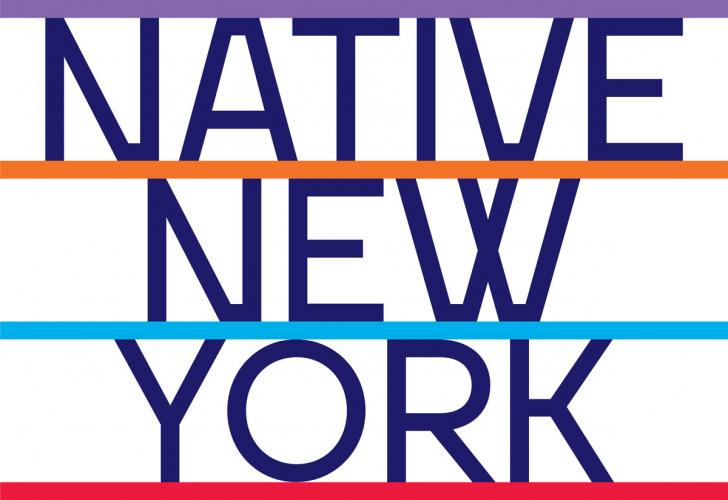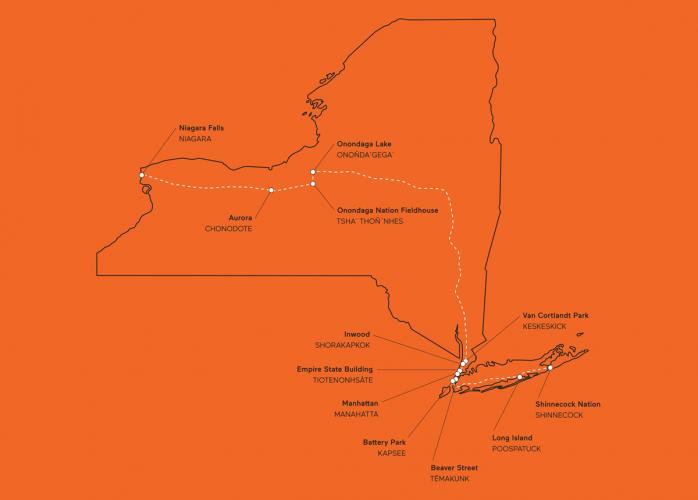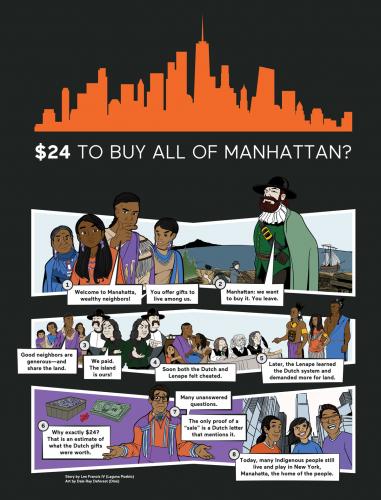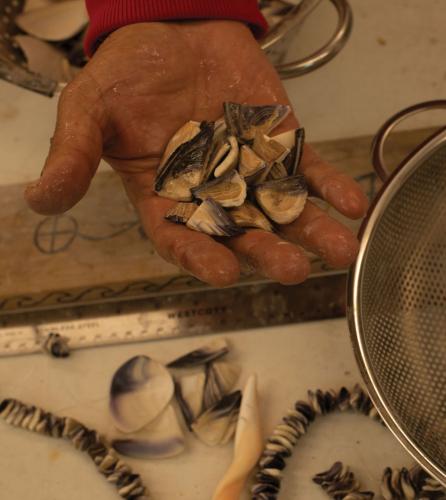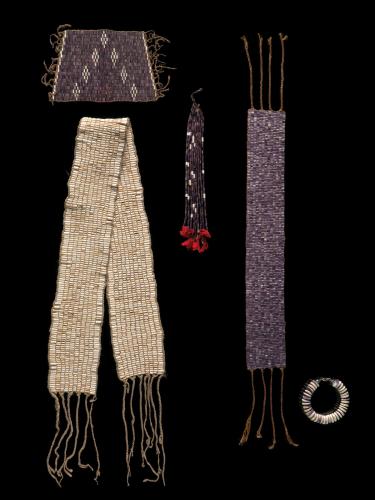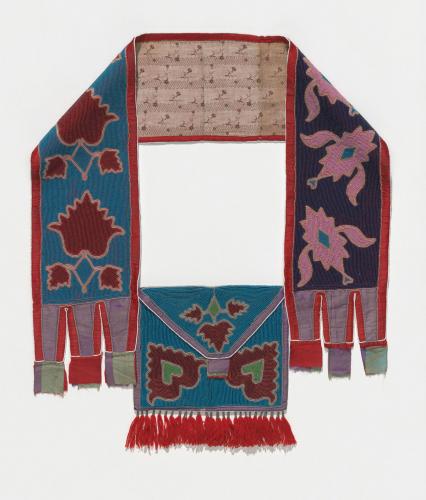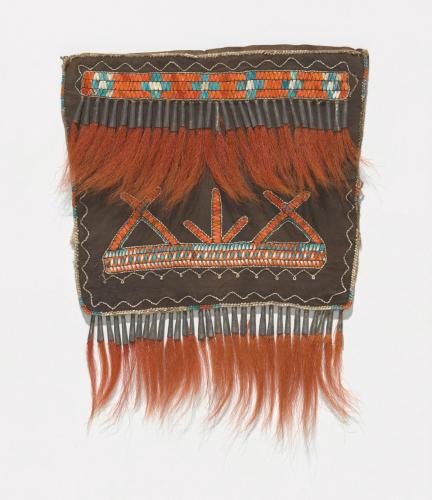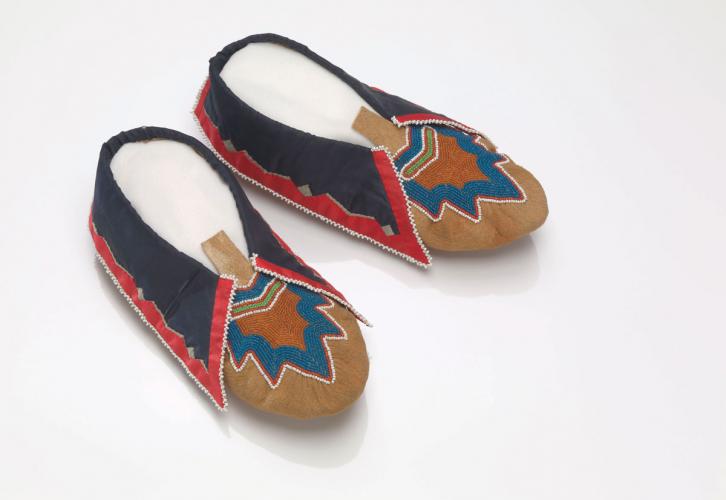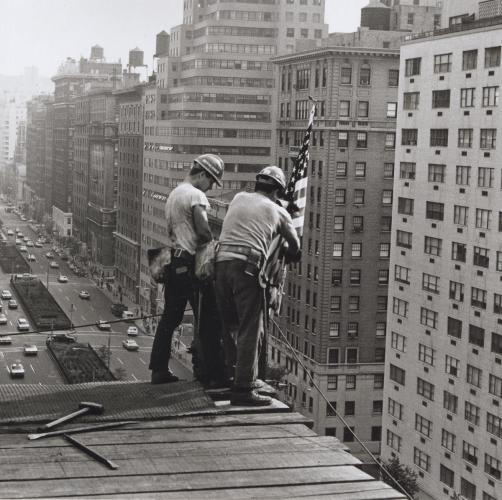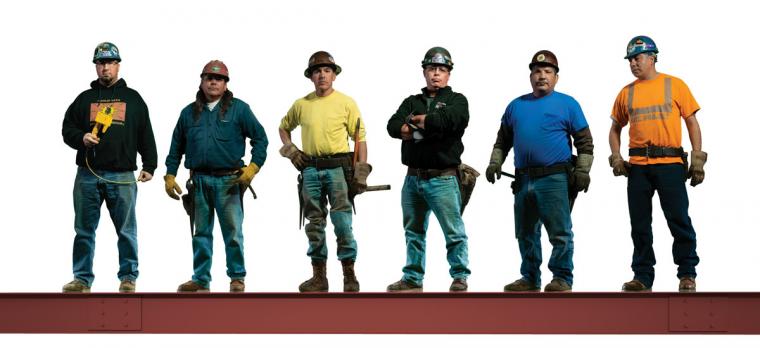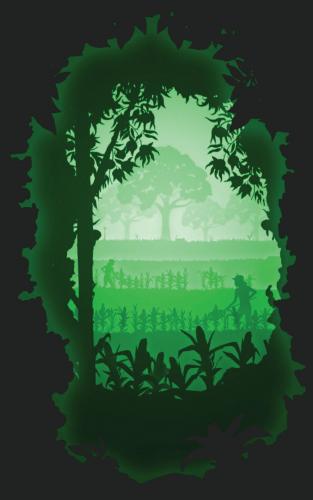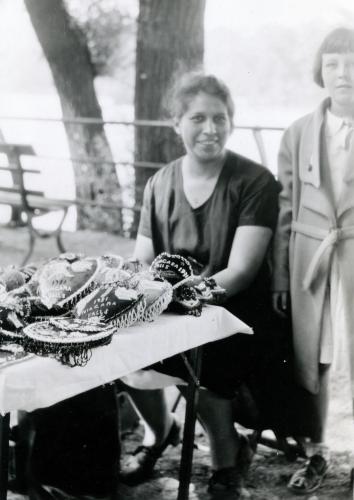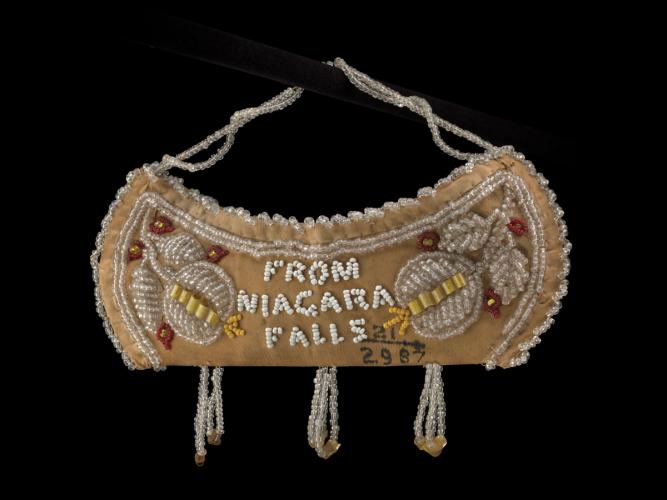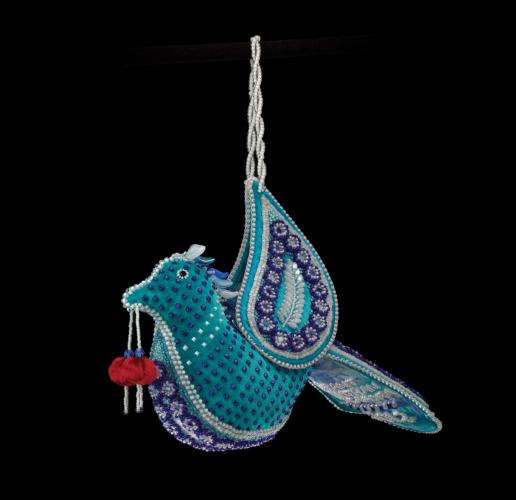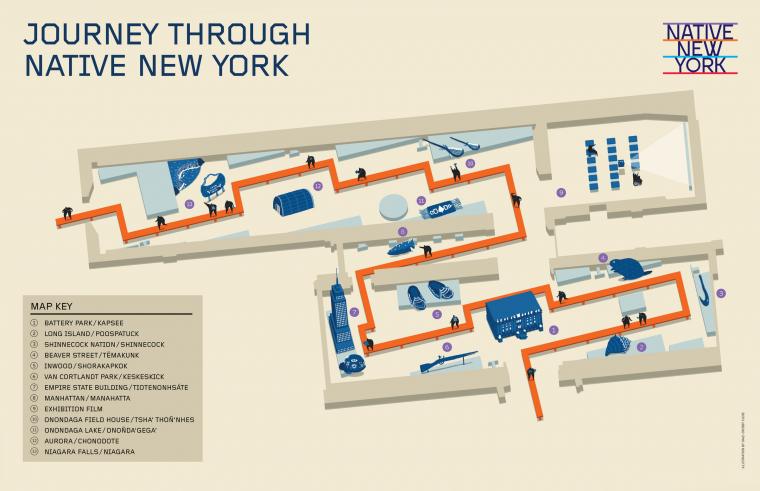Every story has multiple viewpoints—and always more to it that could be told. Through an innovative new exhibition scheduled to open at the National Museum of the American Indian in New York City this year, the museum will present New York from the perspective of a diverse range of Native voices. While Indigenous people have been and continue to be integral to this multicultural state, their stories are seldom heard.
“Native New York” is an immersive experience that shows how Haudenosaunee, Lenape, Mohican and Long Island Native nations have influenced this region and reveals that New York is—and always has been—a Native place. By following a wood path, visitors can journey through 12 locations across New York state, from the shores of Long Island through Manhattan to Niagara Falls. The tales told at these sites through a combination of interactive displays, graphic-novel-style illustrations, unique objects and personal stories span time from before the Revolutionary War through today and will challenge how visitors perceive New York and its Native people.
The approachable narrative of the exhibition will appeal to both adults and youth, and as its content aligns with New York state social studies standards for fourth, fifth and seventh grades, this will be a help to instructors. “Teachers have been looking for this type of information for a long time,” explains Johanna Gorelick, manager of NMAI’s Education Department. “Students want to learn about Native people and culture, yet they don’t know where to look for resources. This really fills the gap.”
Gabrielle Tayac (Piscataway), now an associate professor of history at George Mason University, served as NMAI’s curator for the exhibition from 2012 to 2017. She and other NMAI staff visited nearly all the Indigenous communities mentioned in the exhibition, including those of the Lenape who once lived here and were forced by encroaching colonists to flee to other places such as Oklahoma and Ontario. Tayac says they traveled with community members to locations where significant historical events took place to “see their memories,” and to “hear from them what they felt was important for people to know.” She says, “these landscapes shaped them.” These conversations led to the formation of an advisory committee of representatives from these Native communities who then consulted on the exhibition’s content.
David Penney, NMAI’s associate director for Museum Research and Scholarship, took over as the exhibition’s curator in 2018. He says Native people are often depicted as part of “foundation culture, that they play a role but then disappear and are no longer part of the history of the United States.” Penney says this exhibition “counters that narrative.” For example, visitors can see Mohawk ironworkers construct buildings while balancing on steel beams above Manhattan, how wampum beads are still made in a workshop on Long Island and uniforms of well-known Iroquois Nationals lacrosse players. In an auditorium, they can also listen to contemporary Native people telling their own stories.
The exhibition also reveals “some histories that may have been concealed,” says Penney. One such tale is that of America’s “Founding Father” George Washington ordering the burning of 40 Haudenosaunee towns in 1779 to chase these people from their lands. This earned him the Haudenosaunee name of “Hanadahguyus,” or “town destroyer.” Tayac visited the gully where some of the Haudenosaunee hid. She recalls, “We walked into the gorges where people still had memories and songs for the plants that sustained them while the soldiers were hunting them down.” Penney says, “The best way as a museum to pursue social justice, restorative justice, is by offering more accurate stories of the histories of those experiences.”
“Native New York” presents even difficult tales such as this in easily digestible formats, including comic strips. Laguna Pueblo graphic novelist Lee Francis IV wrote many of the illustrated stories in the exhibition, which were created under the direction of Michael Sheyahshe (Caddo) and in collaboration with several Indigenous comic book artists. “By doing it through a visual medium, I believe we are able to make something more compelling. It sits in the head and hopefully it sits in the heart,” Francis says. “That is how we change the narrative.”
Tayac says she hopes visitors will gain insight into “the profound and ongoing contributions that Native nations have had to building the world and, coming from the other direction, that Native people will also value and appreciate the experiences and the building of their own nations.” She explains, “The Mohican word for the Hudson is ‘Mahicannituck,’ which translates to a ‘river that flows both ways.’ I hope that people will understand that the history of Native New York is a history that flows both ways.”
Teaching About Early Encounters
Debunking the myth of the “sale of Manhattan” and other misconceptions about the Indigenous people of New York prompted NMAI to create the “Native New York” exhibition and its accompanying Native Knowledge 360° teaching module, “Early Encounters in Native New York.” This collection of teacher resources enables students to understand what took place in Manhattan and the Lower Hudson Valley between 1609, when English navigator Henry Hudson and his crew sailed through what is now New York Harbor, and the so-called sale of Manhattan.
The lesson aligns with New York state social studies curricula standards for fourth- and fifth-graders. Students can learn through engaging videos, maps and interactive games that they can explore in the classroom or from home.
See americanindian.si.edu/nk360/resources/Native-New-York-Manhattan.

